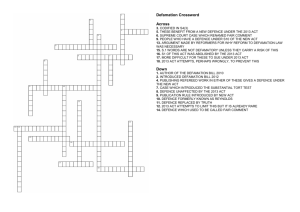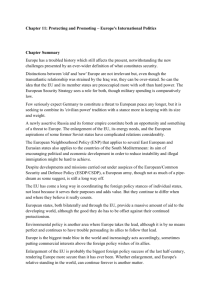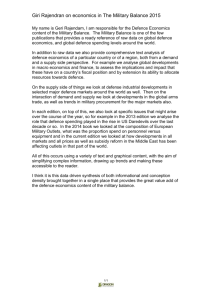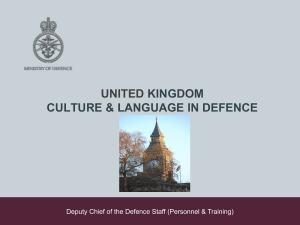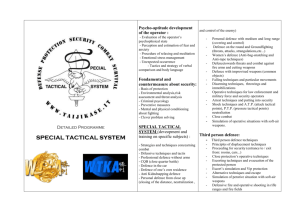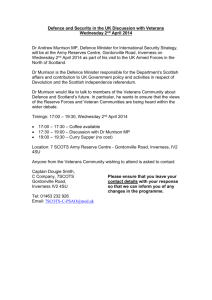PowerPoint Sunusu
advertisement
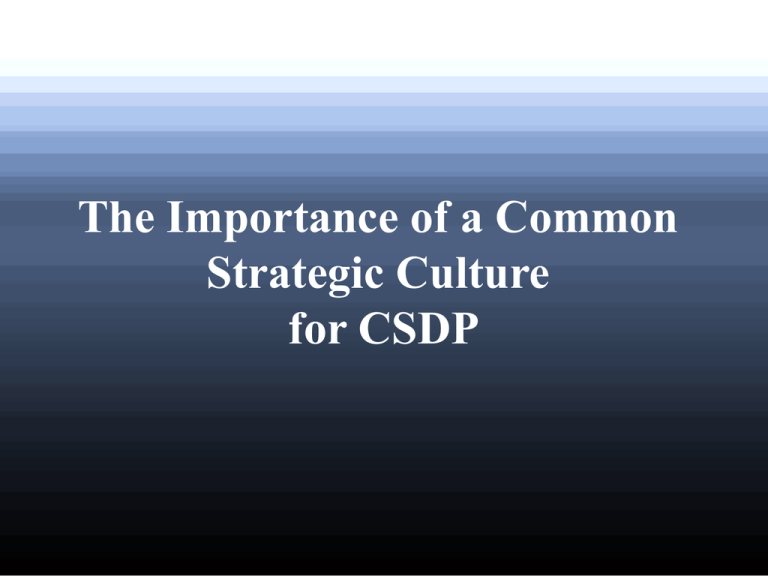
The Importance of a Common Strategic Culture for CSDP CONTENTS What is strategic culture? Strategic cultures within the EU A common strategic culture for the EU What is strategic culture? -No generally accepted definition -First used in a study of Soviet nuclear strategy by Jack Snyder in 1977 -Colin Gray: “a shorthand expression to denote the emotional and attitudinal environment within which the defence community operates”. -Paul Cornish and Geoffrey Edwards: “institutional confidence and processes to manage and deploy military forces as part of the accepted range of legitimate and effective policy instrument.” -Christoph Meyer: “Comprising the socially transmitted identity derived norms, ideas, and patterns of behavior […] which helps to shape a ranked set of options for a communities pursuit of security and defense goals.” -Kerry Longhurst: a strategic culture is “a distinctive body of beliefs, attitudes, and practices regarding use of force…” -Bruno Colson: strategic culture is “the set of attitudes and beliefs professed within the military concerning the political aims of war, as well as the most effective strategic and operational methods for achieving them.” Six factors of a strategic culture: -The geopolitical settings -Military history -International relationships -Political culture and ideology -The nature of civil-military relations -Military technology Strategic Cultures within the EU Peter Rosen: “frame […] choices about international military behavior, particularly those concerning decisions to go to war […] and levels of wartime casualties that would be acceptable.” -Stephen -Lack of integration on security and defence policy Iraq crisis Mali crisis Libya crisis -Different member states have different predominant strategic cultures: 1.Atlanticist, Europeanist, neutral tendencies 2.Allied/neutral, professional power projection/ conscript-based territorial defence, nuclear/non-nuclear, military/civilian instruments, large/small states, weapon providers/consumers 3. Smaller and non-aligned states/former colonial powers Strategic culture reflect the security environment of the 20th century: Cold war Two world wars Strategic culture US/USSR subordinate allies status Holocaust Views about the role of the armed forces and the use of military force vary from country to country: -in self defence: e.g.Germany,Italy -in order to protect national interests or international peace and order: e.g. France, UK, Poland -only for UN peacekeeping and peacemaking operations: e.g.Austria, Ireland A common strategic culture for the EU Can it be assumed that all member countries, Regardless of their particular histrical experience, share the same strategic perspectives? -Common values and principles -European approach to the use of force -European way of crisis management -Increasing institutionalization of the CSDP -Adoption of the European Security Strategy European strategic culture will be based on: -Enlarged vision of security -Comprehensive and internationally legitimate approach to threats -The use of force as a last resort -Comprehensive approach to crisis management -Effective multilateralism


